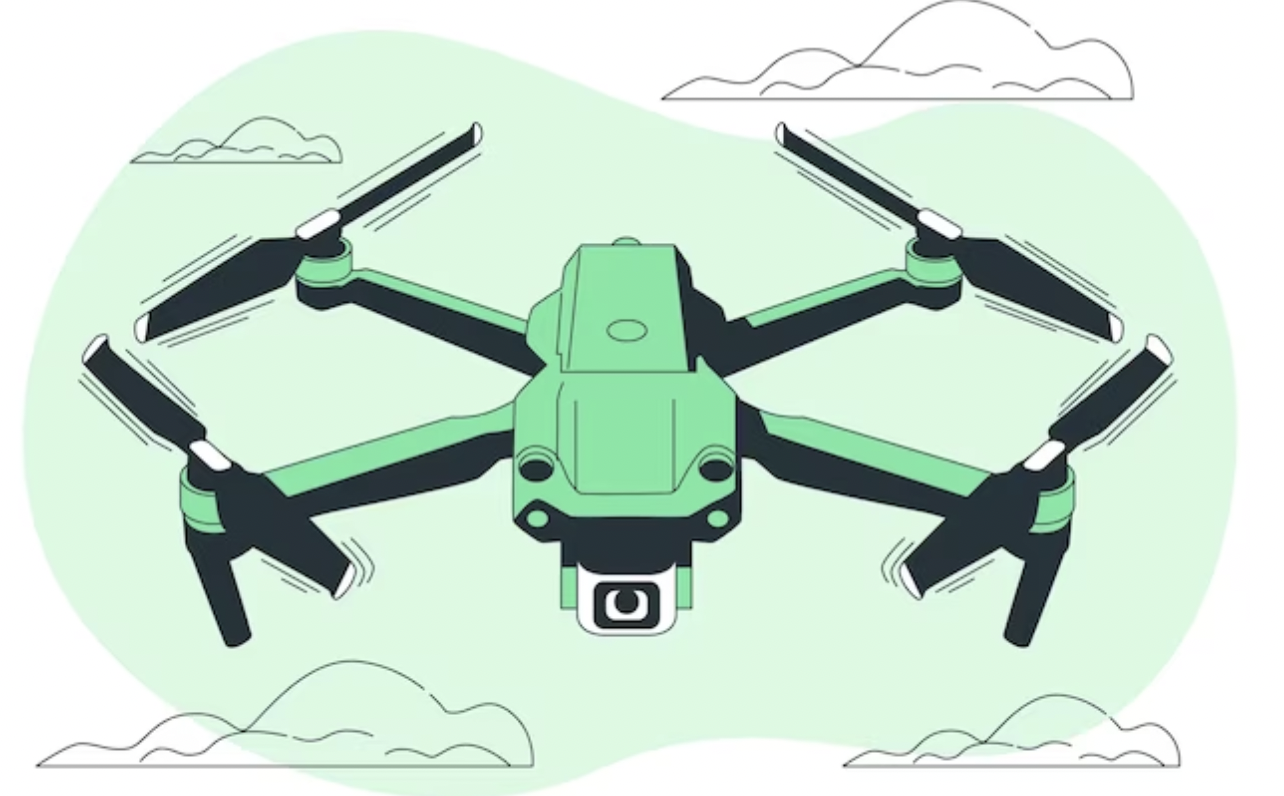Introduction
A drone is an un-piloted aircraft. It can be semi-autonomous, receiving commands from a remote operator coupled with on-board algorithms or it may be completely autonomous initialized in the beginning by an operator. Drones are used in various fields like construction, defence, photography, marketing, delivery, agriculture, rescue and entertainment.
A drone is essentially a flying robot that can be remotely controlled or fly autonomously using coded flight plans that work in coordination with onboard sensors and a global positioning system (GPS). Drones are also known as UAVs (Unmanned Aerial Vehicles) and sometimes RPAs (Remotely Piloted Aircrafts).
According to Fortune Business Insights, the global commercial drone market growth was valued at $8.77 billion in 2022 & is projected to grow from $10.98 billion in 2023 to $54.81 billion by 2030, which shows the interest in the field.
Components of Drone System
The Craft: This may have fixed wings or single or multi-rotary systems for flight. Lighter-than-air UAVs, such as blimps and balloons, and small “Flapping Wing” UAVs also exist.
Ground Control Station (GCS): This is the central control station of the drone. It may be as large as a desk with multiple-viewing screens or as small as a handheld controller. It can also be user-controlled or satellite-operated and usually controls flight and provides status readouts.
Payload: Drones come in a variety of sizes and have varying carrying capacity. Some may need to deliver life-saving medications and others larger disaster relief bags. Some may need to carry only for a thousand feet while others may need to traverse huge seas. So depending on the payload one may choose a suitable drone..
Data Link: This helps the ground operator to communicate with the drone. Usually radio-frequencies are used. 2.4Ghz for control and 5 Ghz for video will usually provide the operator with four miles of usability. At other frequencies, different ranges will be possible.
How Drones fly?
VTOL Drones: Multi-Rotor Drones are capable of vertical take-off and landing (VTOL). They do not need a horizontal track to take-off and land. This makes them advantageous in tight spaces.
GNSS: Global Navigation Satellite System helps drones to plan and navigate their flight path. It also enables the Return-to-Home feature to work in case of low battery or loss of connection with the operator.
Gyroscopes: These are internal heavy flywheels or spinning wheels that help maintain balance and stability during flight.
Applications
Military Drones: The British and US were the first to use military drones for spying during World War II. Today’s advanced drones are equipped with thermal imaging, laser range finders and tools to perform airstrikes.
Drones for delivery: Because drones are airborne they can cut across roads more easily, and are thus more efficient than delivery trucks. Brands like Amazon, Walmart and FedEx are testing out different versions of delivery drones.
Drones for Emergency Rescue: Sometimes in dangerous situations, it is not advisable to send in live personnel. For example, in case of a landslide or an avalanche rescue drones are used to survey the situation and deliver rescue packets.
In Agriculture: Drones are used in agriculture to carry out field surveys, seeding over fields, tracking livestock and estimating crop yield. This helps maximize efficiency and reduce physical strain.
In Outer Space: Drones are sent in outer space to test propulsion system and navigation control. Being unmanned there is less risk of life.
In Wildlife Conservation: Giving an aerial view of animal herds, drones are a much more efficient way of tracking wildlife populations. They can also be used to survey regions destroyed by wildfires, so that reforestation can be carried out.
In Medicine: Drones can deliver medical supplies in hard-to-reach regions. Organ transplants can be delivered quickly, saving vital lives
In 3D Modeling: Drones equipped with LiDAR sensors can survey landscapes more conveniently and compile in-depth 3D maps. LiDAR also enables them in spotting targets in search and rescue missions.
In Photography: Drones are able to capture bird’s eye-view photos of large scenic landscapes. They are also useful for taking pictures of large gatherings like parades and spectators in sports arenas for magazines and newspapers.
Conclusion
Drone Technology has the advantage of safety, efficiency and innovation. Being unmanned drones can be inserted into dangerous scenarios. They don’t need to travel along fixed routes and can cut across roads to shorten their journey. They are able to generate a lot of data very quickly which helps in developing insights and thus leads to innovation.
Drones and UAVs are poised to become an important part of business and government organizations. The evolution of complementary technologies like 5G, augmented reality and computer vision will drive drone market growth and improve drone communication and intelligence capabilities.
Image Sourced from Freepik
